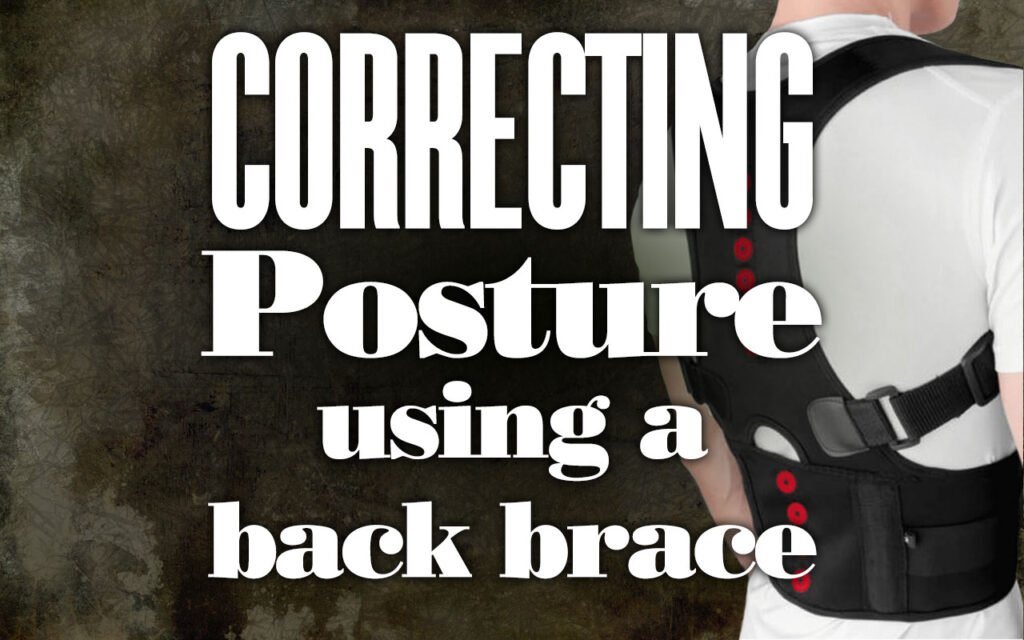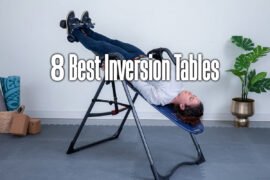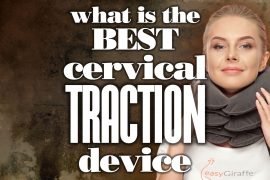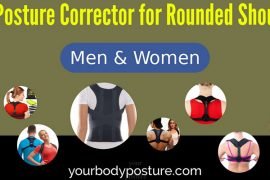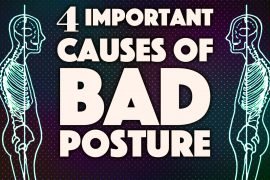It is better to avoid poor posture before it develops, but if the worst is already there, it is vital to take it upon yourself to correct the posture before it is too late. One of the ways to do it by using a top-quality, functional back brace. Below you will find valuable information to correct posture by using a back brace.
Back braces help the wearer achieve proper posture by retraining muscles so that the back can maintain an upright position effortlessly. People who are always sitting in front of a monitor or TV screen or are not active may start to lose muscle tone in their abs, core muscles, and torso.
Using the back braces helps to rebuild the muscles which help you to stand in an upright position. The braces may also be ideal for individuals who have been slouching or slumping for many years.
As the back brace is supporting your back, it will also pull the shoulders back in alignment at the same time. There are different braces in the market, allowing you to pick the one that provides a solution for your problem.
Five Groups Correcting Posture Using a Back Brace
Table of Contents
1. Supportive Braces
These are designed to offer postural support where they ensure that the spine remains in its correct positional. Abnormal posture comes as a result of structural deformities, injury, weakness, and pain. They are best when a person wants to maintain alignment of the spine and normal curvature. They provide external support that gets rid of the abnormal posture.

- Adjustable straps for a customized fit
- Breathable fabric for comfort during extended wear
- Removable padding for versatility and added support
- Lightweight design for ease of movement
- Non-slip material to prevent slipping or sliding
- Reduces pain and discomfort
- Provides stability and support
- Improves posture and alignment
- Adjustable for individual needs
- Can improve performance during activities
- Expensive
- Bulky and awkward
- May restrict movement
- Can cause dependency
- It may weaken muscles over time
2. Immobilizing Braces
Various spinal conditions demand the back to be immobilized for some time. These include traumatic injuries like surgical fusions of the spine or fractures. Immobilization often limits free motion of the affected area so that healing can take place faster.
Without immobilization, a person may end up worsening the condition as he/she goes about his/her daily activities. There are various back braces that you can use to limit certain motions like rotation, flexion, and extension.

- Provides firm support to immobilize the injured area
- Allows for customized fit and compression
- Enhances comfort and reduces skin irritation
- Enables easy movement and reduces fatigue
- Allows for easy cleaning and readjustment
- Protects injured area
- Helps healing process
- Prevents further damage
- It may be necessary after surgery
- Limits movement and activity
- It may cause muscle weakness
- May be uncomfortable
- It may need to be worn for extended periods
3. Corrective Braces
These are primarily used to heal kyphosis or scoliosis. Back braces are useful when it comes to controlling pain by limiting the movements that aggravate this pain.
Additionally, they also alleviate pain symptoms by compressing the abdomen, which works to unload the vertebrae, intervertebral, and other structures of the spinal column.
While looking for the ideal tools that help with correcting posture using back brace, keep in mind that they vary regarding construction and material used.
You can find some that are:
- Made from elasticized panels
- Made from silk
- Have neoprene panels
- Have cloth sections
- Feature adjustable straps to enhance comfort
- Come with padded pressure parts that remind the wearer to straighten up
- Come with steel rods in the back pockets to give strong support and improve proper posture
- Some only fit the upper back, while others can go below the hips
One point worth noting is that some back braces are specially made for women and others specifically for men. However, are unisex and can be worn by anyone who wants to correct their posture in a non-complicated way.
Anyone who wants to take advantage of the process of correcting posture using back brace should be highly cautious.

As much as the braces may offer great help, you should not wear them 24/7 because your muscles may learn to depend on the braces without functioning the way they are supposed to. Your doctor can help point you in the right direction of the best back brace to purchase depending on your problem.
Just remember that the brace you decide to use should be:
- Comfortable- it may take some time getting used to, but it should not be a bother.
- Functional- it should not interfere with your day to day activities
- Requires minimal effort- it should work to correct your posture without too much effort from your end.
- Adjustable tension for personalized alignment
- Discreet design for minimal visibility
- Comfortable fit for prolonged wear
- Removable for easy maintenance and cleaning
- Durable materials for long-lasting use
- Can improve posture
- Can help correct alignment issues
- Can reduce strain on the body
- Can provide support for conditions such as scoliosis
- Can be worn discreetly under clothing
- May be expensive
- May be uncomfortable or inconvenient to wear
- May restrict movement or flexibility
- May require adjustments or fittings over time
4. Lumbar Braces
A lumbar brace, also known as a back brace or support belt, is a medical device designed to provide stability & support to the lower back. It is commonly used to alleviate pain and discomfort caused by conditions such as sciatica, herniated discs, or muscle strains. Lumbar braces can be made from a variety of materials, including neoprene, elastic, or foam, and may be designed to fit snugly around the waist or lower back. Some lumbar braces may also incorporate additional features, such as adjustable straps or built-in heating elements, to further enhance their effectiveness. Overall, lumbar braces can effectively manage lower back pain, but a healthcare professional should carefully evaluate and prescribe their use.
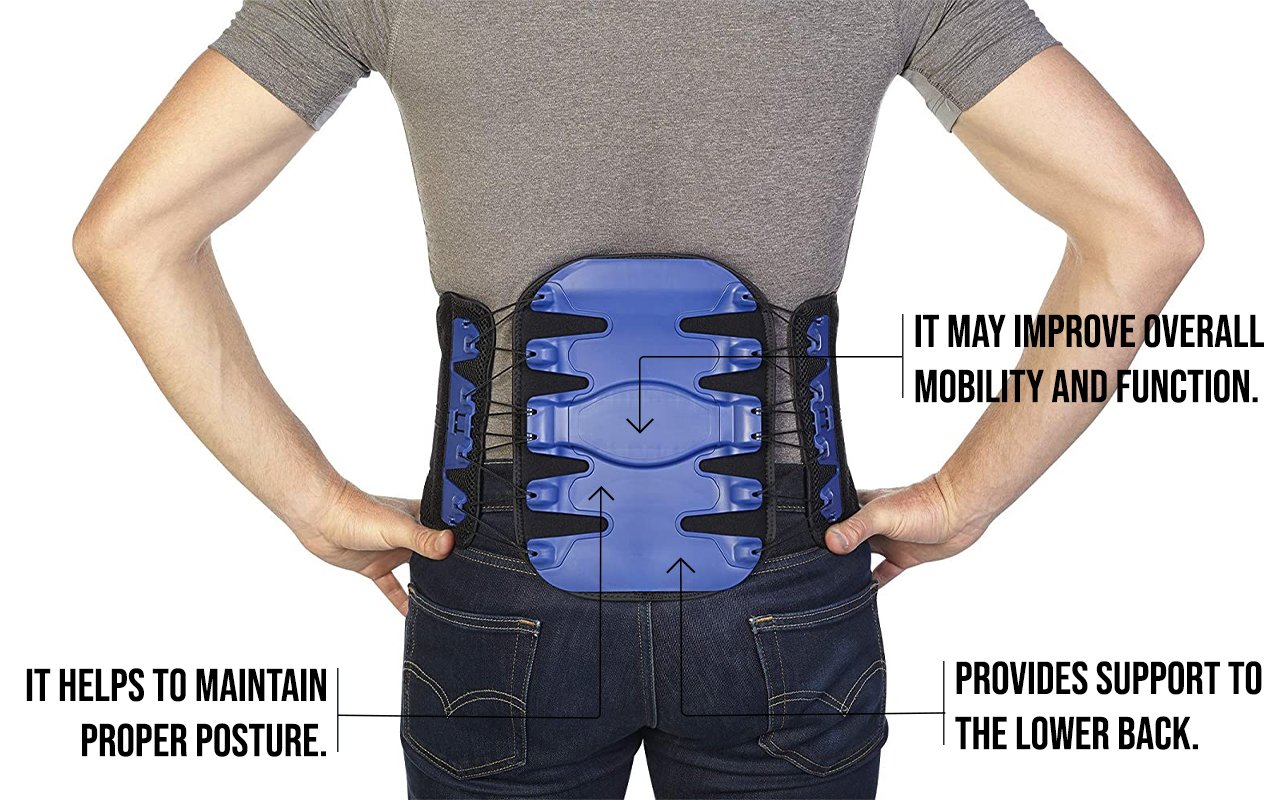
- Adjustable compression for customizable support
- Breathable material for all-day comfort
- Sturdy support stays for stability
- Contoured design for a snug fit
- Easy-to-use fasteners for hassle-free application
- Provides support to the lower back.
- It can reduce pain and discomfort.
- It helps to maintain proper posture.
- It can aid in the healing process after an injury.
- It may improve overall mobility and function.
- It can cause dependence and weaken muscles.
- It can limit the range of motion and flexibility.
- It may not be effective for all types of back pain.
5. Athletic Back Braces
Athletic back braces are specially designed orthopedic devices that support and stabilize the lower back during physical activities. These braces are commonly used by athletes, fitness enthusiasts, and individuals with back pain to prevent injuries, promote healing, and improve performance. It comes in various styles, materials, and sizes and are designed to fit snugly around the lower back to provide compression, warmth, and support. They are a popular choice for individuals seeking relief from back pain or wanting to prevent injury during high-impact activities such as running, weightlifting, or team sports.
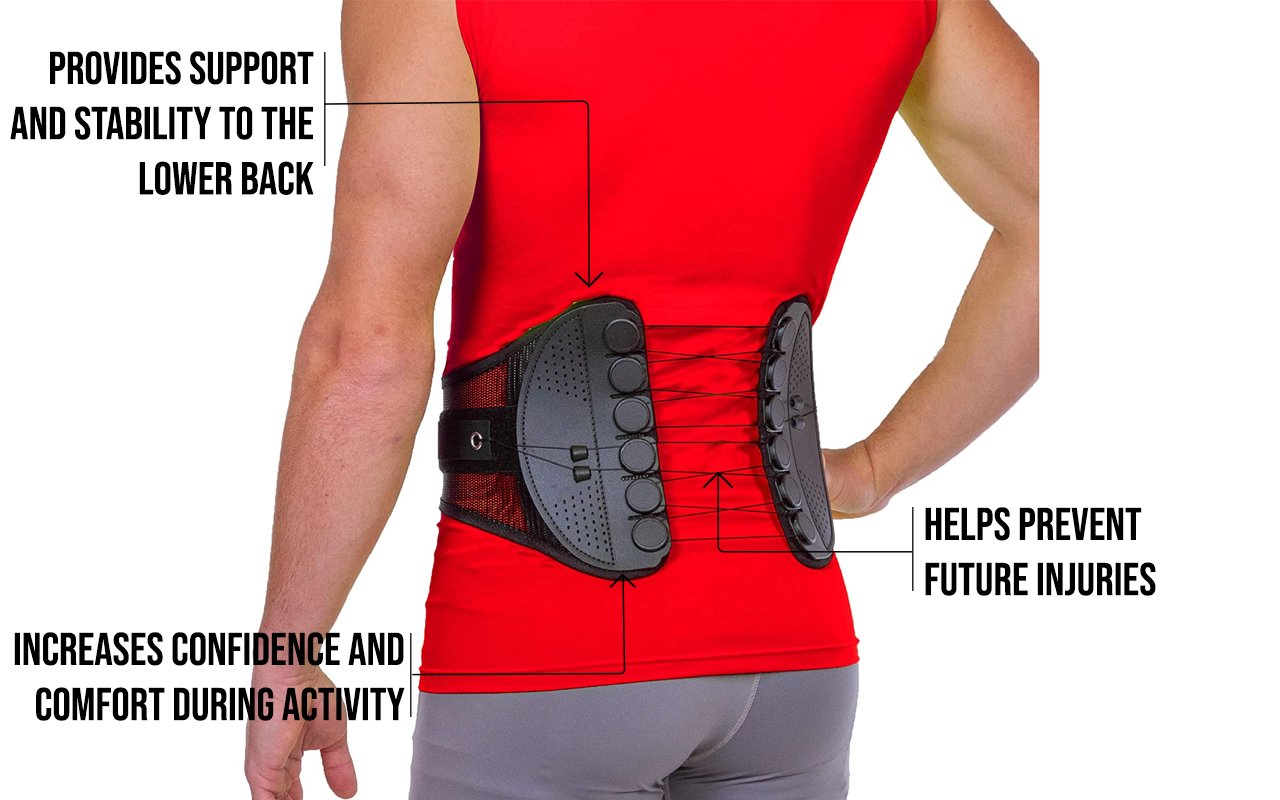
- Moisture-wicking fabric to prevent discomfort from sweat
- Lightweight construction for ease of movement
- Anti-slip technology prevents the brace from shifting
- Removable inserts for targeted support
- Reflective elements for visibility in low-light conditions
- Odor-resistant fabric for improved hygiene
- Provides support and stability to the lower back
- Can reduce pain and discomfort during physical activity
- Helps prevent future injuries
- Can improve posture during exercise
- Increases confidence and comfort during activity
- It may restrict the range of motion during certain activities
- Can cause discomfort or irritation to the skin
- It can become sweaty and uncomfortable during extended use
How To Use The Back Braces For Correcting Posture
Using a back brace can be an effective way to correct poor posture and alleviate pain. Here are a few tips for how to use a back brace for correcting posture:
- Choose the right size and type of back brace: There are different types of back braces designed for different needs, so make sure you choose one that is appropriate for your specific posture issue. It is important to choose the correct size for your body to ensure maximum effectiveness and comfort.
- Wear the brace properly: Most back braces have adjustable straps or buckles to allow for a customized fit. Make sure you adjust the straps so that the brace fits snugly but comfortably around your waist and shoulders.
- Wear the brace for short periods of time at first: Your muscles will need time to adjust to the new posture that the brace is promoting. Start by wearing the brace for short periods of time, such as 30 minutes at a time, and gradually increase the amount of time you wear it each day.
- Use the brace in combination with other posture correction techniques: A back brace can be a useful tool for correcting posture, but it is not a magic solution. You should also incorporate other techniques into your daily routine, such as stretching, exercises, and ergonomic adjustments to your workspace or living environment.
- Consult with a healthcare professional: If you have a chronic or severe posture problem, it is important to consult with a healthcare professional before using a back brace. They can guide you on the best type of brace for your needs and how to use it effectively.
Things To Take Care While Using The Back Braces for Correcting Posture
- Use it as directed: Follow the instructions provided by the manufacturer or healthcare professional carefully. Overuse or misuse of the brace can cause further damage to your back.
- Choose the right size and fit: Make sure to choose a back brace that fits correctly and is the appropriate size for your body. Wearing a brace that’s too tight or too loose can be uncomfortable and may not provide the necessary support.
- Gradually increase wear time: Start by wearing the brace for short periods, gradually increasing the time as your body adjusts to it. Wearing the brace for extended periods can cause muscle weakness and dependence on the brace.
- Incorporate exercise and stretching: Using a back brace is not a substitute for exercise and stretching. Incorporate these activities into your routine to strengthen your back muscles and improve posture.
- Take breaks: Avoid wearing the brace for extended periods. Take breaks every few hours to stretch and move around to prevent stiffness and muscle weakness.
- Clean the brace regularly: Follow the manufacturer’s instructions for cleaning the brace to prevent the buildup of bacteria and odors.
FAQs
Q1. How does a back brace help correct posture?
A back brace helps correct posture by supporting the spine and providing resistance to slouching. It gently pulls the shoulders back and promotes proper alignment of the spine, which can help alleviate back pain and improve overall posture.
Q2. Who can benefit from wearing a back brace for correcting posture?
Anyone who suffers from poor posture or back pain may benefit from wearing a back brace for correcting posture. This includes individuals who sit at a desk for extended periods, people who stand for long hours, and those who have suffered an injury or have a medical condition that affects their posture.
Q3. Are there any potential drawbacks to wearing a back brace for correcting posture?
Wearing a back brace for correcting posture for extended periods of time may weaken the muscles in the back and abdomen, leading to a dependency on the brace. It is important to use the brace as a temporary aid and gradually build strength through exercise and physical therapy.
Q4. How long should I wear a back brace to correct posture?
The duration for wearing a back brace for correcting posture may vary depending on individual needs. It is recommended to start by wearing the brace for short periods of time and gradually increasing the duration as your muscles strengthen.
Q5. Can wear a back brace for correcting posture cause discomfort?
Wearing a back brace for correcting posture may cause some discomfort initially as your body adjusts to the new position. However, it should not be painful. You should consult your healthcare provider if you experience pain or discomfort while wearing the brace.
Q6. How do I choose the right back brace for correcting posture?
The right-back brace for correcting posture should fit comfortably and provide the necessary support for your specific needs. You should consult with a healthcare provider to determine the appropriate type of brace for your posture needs.
Q7. Do I require a prescription to buy a back brace for correcting posture?
No, you don’t need a prescription to buy a back brace for correcting posture. They are available over the counter at most drug stores, medical supply stores, and online retailers.
Conclusion
In conclusion, using a back brace can be a helpful tool for correcting posture and reducing pain. However, it is important to remember that it should be used as a temporary measure and not a long-term solution. By developing good posture habits and maintaining a healthy lifestyle, you can improve your posture and overall well-being in the long run.


